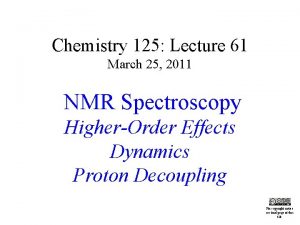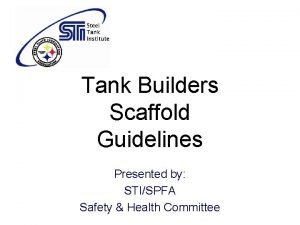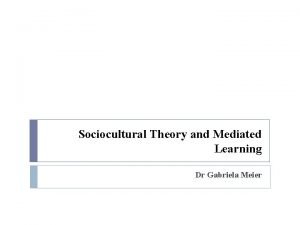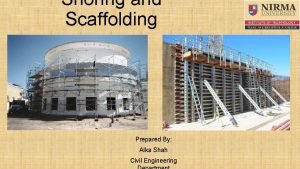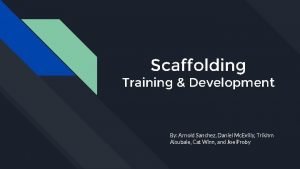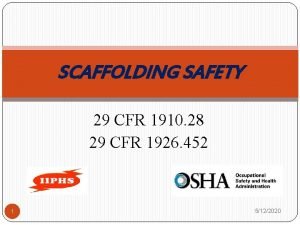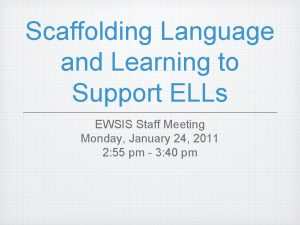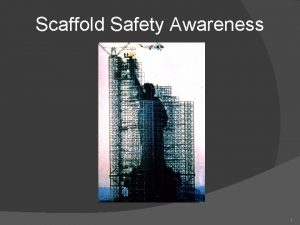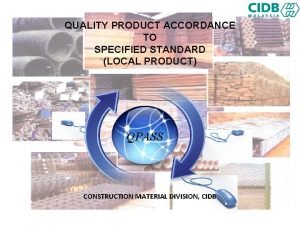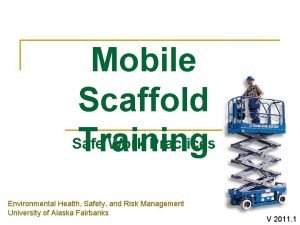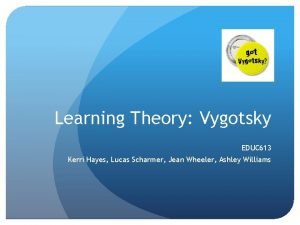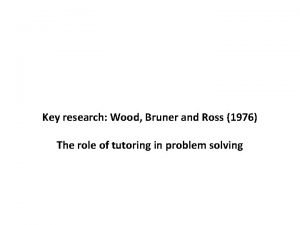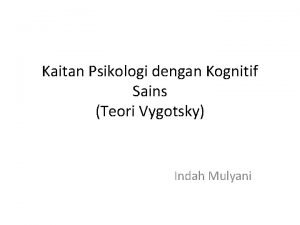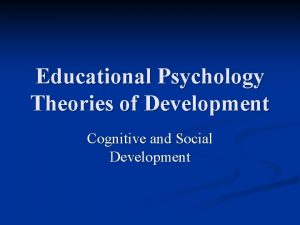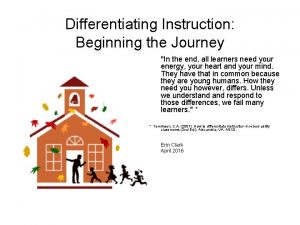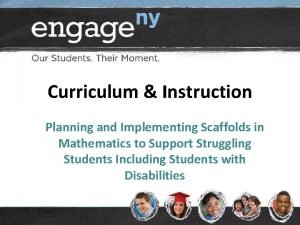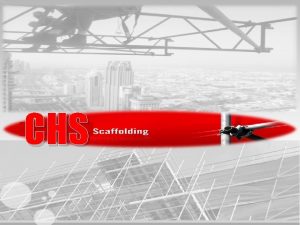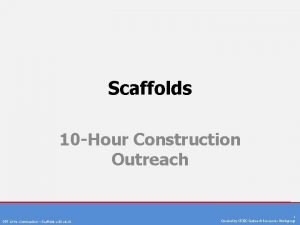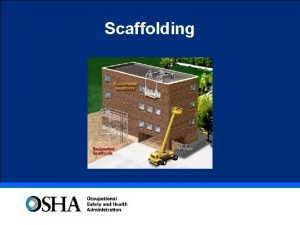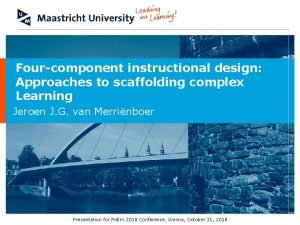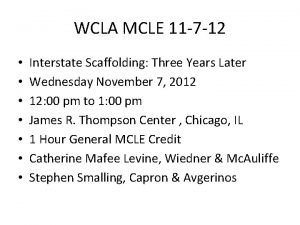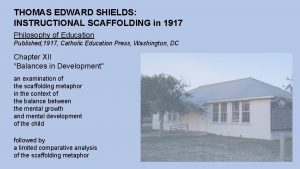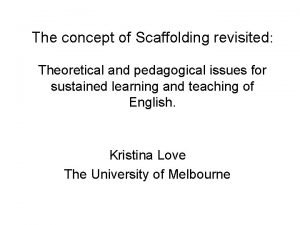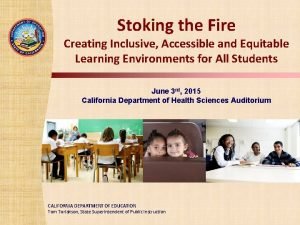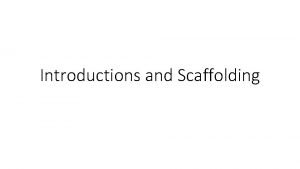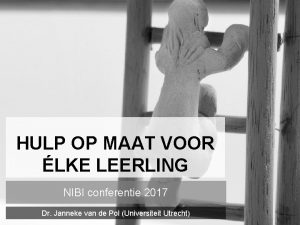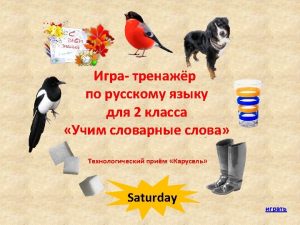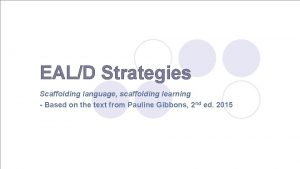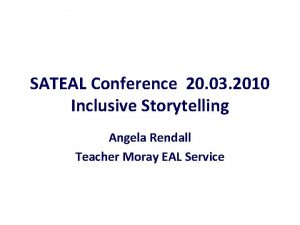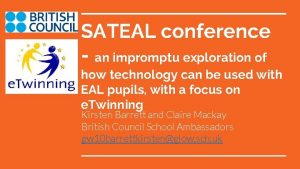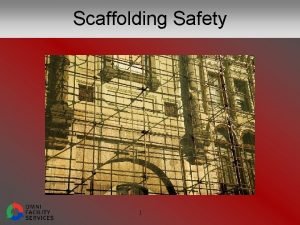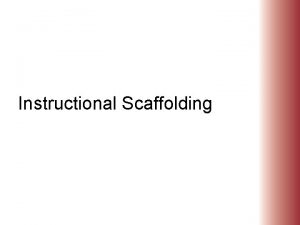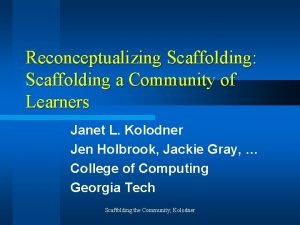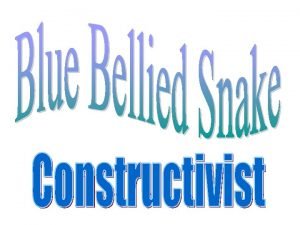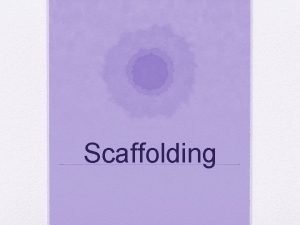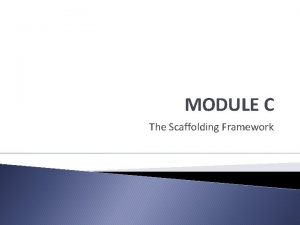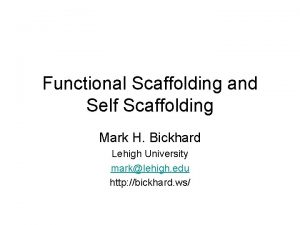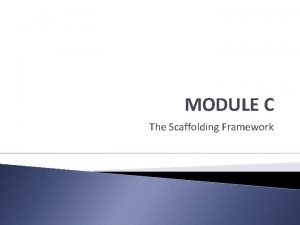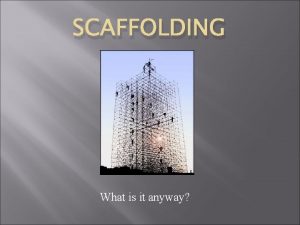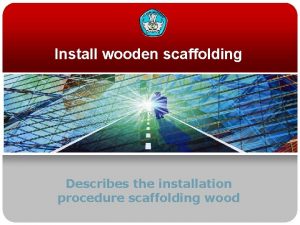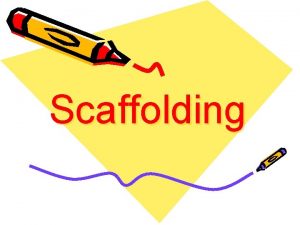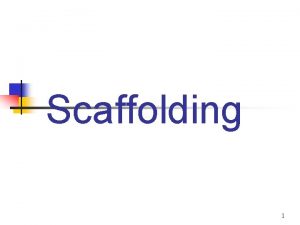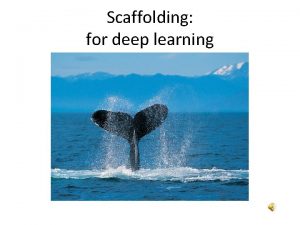Saturday 19 March 2011 SATEAL CONFERENCE Scaffolding language




































- Slides: 36

Saturday 19 March 2011 SATEAL CONFERENCE Scaffolding language learning Identifying language functions and using key visuals Manny Vazquez Hounslow EAL Team

Academic Vocabulary Compute not your immature gallinaceans prior to the puncture of their brittle epidermis. Cleave gamineous matter fodder during the period in which the orb of the day is refulgent. Every substance which coruscates is not fashioned from aureate material.

After 6 -8 months Polish speaker Year 6 Q. Why do houses have to have a roof? Because when it raining you cannot. . wet. Q. Why do you wear football boots. Because when you’re running on the grass you cannot flip over the edge. If you have these (pointed to studs in the picture) go little bit ground. Q. Can you describe how a hot air balloon works? Fire…. When you pull the arm there is fire and the smoke go out and… (gesture - pressed arm down) and then the air pull out the smoke and then air comes in.

Aims • To explore ways of developing thinking skills and language functions in our learners • To look at how key visuals can help us do this

Starting point: Know the Language Functions and their language patterns Naming Sequencing Describing Sorting from known criteria Asking questions Comparing and contrasting Classifying Explaining Deducing Hypothesising Generalising Reasoning Problem solving Analysing Ranking Evaluating

Science, History and Geography in the National Curriculum Find out about different plants and animals in the environment Identify light sources What objects that have survived tell us about Ancient Egypt How a switch can be used to break a circuit Find out what happened in the Great Fire of London Follow a route on a map Recognise how places compare with other places Use knowledge of liquids to decide how a mixture might be separated and interdependent

Cognitive language All language functions are expressed in language patterns or structures example

3. Identify the language functions in a task How to break a circuit explaining Find out about animals and plants in the local environment Describing, classifying What objects that have survived tell us about Ancient Egypt Identifying/ describing/ deducing/ hypothesising

The Knowledge Framework (Mohan 1986) Classification Principles Evaluation Description Sequence Choice

The Knowledge Framework (Mohan 1986) Classification Principles Evaluation Classify chess pieces Understand the rules for moves Evaluate moves according to strategies Description Sequence Choice Identify chess pieces Sequence moves Choose appropriate moves

6 main ways of expressing language Ways of classifying Ways of reasoning Ways of expressing and justifying an opinion Ways of describing Ways of sequencing Ways of making decisions

Activity types Ways of classifying Ways of reasoning Ways of expressing and justifying an opinion Sorting activities Matching/ sequencing activities Ranking activities Ways of describing Ways of sequencing Ways of making decisions Matching activities Sequencing activities Decision making activities

6 types of activity and their matching language functions Ways of classifying Ways of reasoning Ways of expressing and justifying an opinion Sorting activities Matching/sequencing activities Ranking activities Classifying Generalising Explaining Predicting Deducing Hypothesising Generalising Ranking Evaluating Ways of describing Ways of sequencing Ways of making decisions Matching activities Labelling Naming Identifying Describing Measuring Comparing/ contrasting Sequencing activities Decision making activities Sequencing Narrating Following a process Making decisions Solving problems

Language patterns across a topic Ways of classifying Ways of reasoning Different sources of Why floods occur? rivers One source is a glacier Floods occur when……which leads to…. Ways of describing Ways of sequencing Ways of expressing and justifying an opinion What is the most important use of a river? I think the most important use of a river is…. . because…. . Ways of making decisions Compare and contrast What happens in a 2 rivers flood? How would you save water? The source of the River… First………next…. . . then… is a …. whereas the source of the River…. is…. . I would save water by…. .

What are key visuals? • Visual organisers such as tables, charts, diagrams • An aid to present information clearly • Help pupils’ conceptual development

Using key visuals • • • 1. Completing a diagram 2. Classifying pictures and text 3. Listening to and sequencing a text 4. Using clues 5. Reading texts 6. Matching, classifying, sequencing, ranking/ evaluating statements

Scaffolding pupil talk Meat eaters Plant eaters Cat Squirrel Hawk Mouse Producer Seeds Consumer/ prey Predator Mouse Cat

EAL Planning Framework (Pauline Gibbons) Activity Visual support Sorting animals into plant/me at eaters T chart Creating a food chain Flow diagram Language functions Classifying Picture of garden Language structures Vocabulary This is a. . Meat It eats. . Plants Leaves Cat Picture of garden Sequencing a process First… Producer The. . eats. . Consumer The …is eaten by. . Prey


Literature Geography History Literature Describing Evaluating Expressing feelings The top/bottom of the hill… the hillside. . The scenery…. down by the river beautiful, rugged, rolling hills, isolated, bleak, grandeur Geography Naming Locating Describing Cause and effect The peak…the slope…the valley…the riverbank…rainfall…erosion steep, contours, features caused by…occurs when… History Naming Locating Describing Deducing Hypothesising Hilltop…slope…valley…riverbank…. hillfort. . fortification…rampart…village…dwellings defence…safety…shelter was probably…could have been …most likely

Examples of language functions in History, Geography and Science Naming/ identifying That’s the source of the river. He’s a chimney sweep. Describing Tutankhamun’s funeral mask was made of gold with… Classifying These are different kinds of Egyptian jewellery. Those are equipment for cooking. Limestone is a permeable rock. That’s made of glass. Sequencing First of all the Persians invaded Greece. Then… The first thing that happens is that water flows over rock. The water then… Comparing and contrasting The climate in England is… whereas in Saint Lucia it is… Marble is harder rock than chalk

Examples of language functions in History, Geography and Science Explaining Henry viii married six times because…. Ranking/evaluating I think that rivers are important because they provide water for us. People in…. find that the best use of water is for…. . The most important man in Egyptian society was the Pharaoh. Cause and effect Rivers affect the landscape by…. A cool box is a thermal insulator. As it can keep the heat out so the food inside the box stays cool Deducing I think that he’s a Roman soldier because he’s carrying…. Hypothesising They found lots of …. in the Mary Rose. That tells us that Tudor sailors probably used to…. In Egyptian times the Pharaoh would have……. We know this because….

• Key Visuals Used for: • Organising thinking around texts, pictures etc. • Enhancing pupil discussion about texts, pictures, videos, artefacts etc. • Reporting back

Language of History Interpreting and explaining when/ how Past tense : passive forms Modal verbs: might have, would have Abstract nouns Punishment, the poor Specialist vocabulary for History Henry viii ruled…. reigned…. Idiomatic language Sat on the throne

Draw it What do you think its made of? What colour is it? Is it plain or decorated ? What do you think its for? Who do you think would have used it, rich or poor? What is this? I think it is a , , , because……………. It could also be ……since it……. pointed heart-shaped metallic scalloped edges As it is …………at the bottom it might be…………… Reasoning and deducing

WHAT ARE THEY TALKING ABOUT? TEXT 1 (verbal discussion – context bound) “try this one…. . no it doesn’t go…. . it doesn’t move…. try that…. . yes. . it does a bit…. that won’t work…. . it’s not metal…. . these are the best…. . it’s making them go really fast” TEXT 4 A magnet is a piece of metal which is surrounded by an invisible field of force within it. It is able to pick up a piece of steel or iron because its magnetic field flows into the metal, turning it into a temporary magnet.

Reporting back – a strategy for language development 3. Our experiment was to find out what a magnet attracted. We discovered that a magnet attracts some kinds of metal. It attracted the iron filings, but not the pin. It also did not attract things that were not metal. 4. A magnet is a piece of metal which is surrounded by an invisible field of force within it. It is able to pick up a piece of steel or iron because its magnetic field flows into the metal, turning it into a temporary magnet. 1. “try this one…. . no it doesn’t go…. . it doesn’t move…. try that…. . yes. . it does a bit…. that won’t work…. . it’s not metal…. . these are the best…. . it’s making them go really fast” 2. “We tried a pin, a pencil sharpener, some iron filings and a piece of plastic. The magnet didn’t attract the pin, but it did attract the pencil sharpener and the iron filings. It didn’t attract the plastic. ”

Opportunities to report back (assessment for learning) Science: magnets The magnet did The magnet attract this didn’t attract this pin pencil sharpener iron filings plastic

Reporting Back 1. Highly contextualised talk using a key visual (from a shared experience) 2. Using the completed key visual as a means of reporting back to the class (not a shared experience) 1. “try this one…. . no it doesn’t go…. . it doesn’t move…. try that…. . yes. . it does a bit…. that won’t work…. . it’s not metal…. . these are the best…. . it’s making them go really fast” 2. “We tried a pin, a pencil sharpener, some iron filings and a piece of plastic. The magnet didn’t attract the pin, but it did attract the pencil sharpener and the iron filings. It didn’t attract the plastic. ”

Key Visuals for reading n. Scanning texts n. Extracting and recording information n. Recalling information more easily n. Reading and understanding textual organisation

Trying some texts Activity Which key visuals would / could you use with these texts?

Key Visuals to generate writing For writing notes • Sentence level and text level writing – a form of writing frame • Tables – for sentence and paragraph construction • Matrices and tick charts – for writing descriptions • Sequence charts – for writing stories, about processes • Explanation(cause and effect charts) – for writing explanations at sentence or paragraph level • Ranking charts – for ranking and evaluating

Write explanations Existing condition Cause A camel is perfect for the desert Effect has large spreading toes can walk on soft sand doesn’t go up them can close nostrils Another reason because as so therefore this means

Explanations Why/ How? (Causal explanation) Existing condition Cause Effect How an animal can live in its habitat because… as… which leads to… which means that… therefore…. . Why a thermos flask is good for keeping drinks hot which helps it to… Why people like/ dislike a character in a story Why the Romans invaded Britain which lead to… which meant that… Why rivers get polluted as a result…

KEY VISUALS • Explanatory • Evaluative • Generative

PLENARY • Try out some Key Visuals to help mediate and develop language in your next lessons • Key Visuals CD • Questions
 Sateal
Sateal Anthem of poland
Anthem of poland March 25 2011
March 25 2011 Customer experience management conference 2011
Customer experience management conference 2011 Gcyf 2011 annual conference
Gcyf 2011 annual conference Contoh scaffolding vygotsky
Contoh scaffolding vygotsky Tank bracket scaffold
Tank bracket scaffold Scaffolding teaching method
Scaffolding teaching method Sociocultural theories of learning
Sociocultural theories of learning Flying shore scaffold
Flying shore scaffold Mc scaffolding
Mc scaffolding Sole plate scaffolding
Sole plate scaffolding Osha 1910 scaffolding inspection requirements
Osha 1910 scaffolding inspection requirements Scaffolding techniques for ells
Scaffolding techniques for ells Bad planking scaffolding
Bad planking scaffolding Cidb product certification
Cidb product certification Mobile scaffold accident
Mobile scaffold accident Scaffolding definition education
Scaffolding definition education What is vygotsky's theory of scaffolding learning
What is vygotsky's theory of scaffolding learning Wood bruner and ross 1976 techniques
Wood bruner and ross 1976 techniques Scaffolding adalah psikologi
Scaffolding adalah psikologi Tg20 15 free download
Tg20 15 free download Vygotsky theory
Vygotsky theory Scaffolding vs differentiation
Scaffolding vs differentiation Scaffolding vs differentiation
Scaffolding vs differentiation Creative house scaffolding
Creative house scaffolding Types of scaffolding ppt
Types of scaffolding ppt Scaffolding meaning in teaching
Scaffolding meaning in teaching Scaffolding meaning in teaching
Scaffolding meaning in teaching 1926 scaffolding
1926 scaffolding Ask fhml
Ask fhml Scaffolding mart
Scaffolding mart Scaffolding philosophy
Scaffolding philosophy Pedagogical scaffolding
Pedagogical scaffolding What is scaffolding
What is scaffolding Introduction funnel method
Introduction funnel method Scaffolding voorbeeld
Scaffolding voorbeeld


